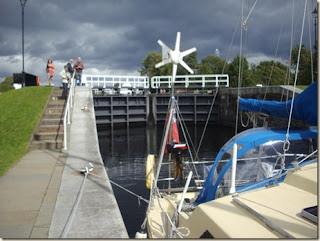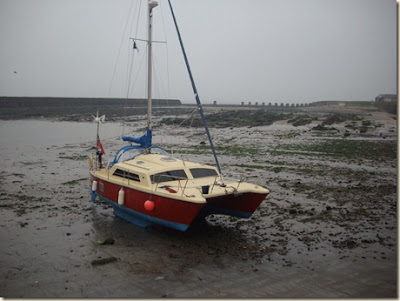Our delivery of Cirrus Cat to her new home was complete after we finished our passage of the Crinan Canal and then a day later tied her to a pontoon in Tarbert Harbour. What we started back at the beginning of July, launching the boat from a boatyard in Cornwall and sailing her anticlockwise around Britain to the west coast of Scotland, is now finished. Job Done!
On reflection, this was never going to be the most relaxed of sailing trips for us, largely because we always knew that the distance we had to cover was considerable, further in fact than we had ever previously sailed in one season. It was, first and foremost, a boat delivery trip and this was always in our minds. For this reason the trip never really became totally relaxing, it always had a more serious side to it, that of getting Cirrus close to home before the end of the sailing season. Setting off in July might have made the trip seem a little more pressured than it need have been but it did give us a wealth of new sailing experiences and a feeling of immense satisfaction over what we have achieved.
So was it worth it?
Well there were certainly a lot of fun moments and we do always feel very comfortable on board the boat – it is our home from home – so at no stage did we feel like giving up. What was most enjoyable was revisiting so many of the east coast harbours, places we visited in 2009 and many other places we have known for much longer. Once again we made friends along the way and met a lot of very charming people, preserving our good impressions of those that live in or around our coastal communities. On the downside, we did a little less sailing than we would have liked, making more use of the engine than we prefer to do because of the need to press on when the weather allowed us to do so. Along the way, as luck would have it, we managed to miss out on the best of the summer weather because by the time a heat-wave did arrive in the south of England, we were further north where we found cooler climes. But despite all this, yes, it was worthwhile doing the trip the long way round and we are secretly quite proud of what we have achieved.
Having now moved from boat to house we find ourselves having to re-learn old skills and to cope with the strangeness of things.
Flushing the loo without operating a pump is a strange experience and watching television is an art we have seem to have lost somewhere along the way (we never could see the point of having one on board the boat). We struggle to find programmes that interest us enough to keep us in our seats. Outside I observe that the birds which visit our garden are puny specimens compared with those that soared past us at sea although they do make up for this lack of size by energetic movement undertaken at high speed. We are fortunate that the sea is not far from us here and it takes only a few minutes walking to put us back in a more familiar environment, amongst the rocks off Carradale Point where a gull sits patiently digesting its last meal.

As I scramble about over the sun-kissed lichen I notice a sea urchin waving its tentacles at me from just beneath the surface and I bend low to take its picture before spotting the yellow sponge-like creature cuddling up to it. These are the colours of nature at its best.



























